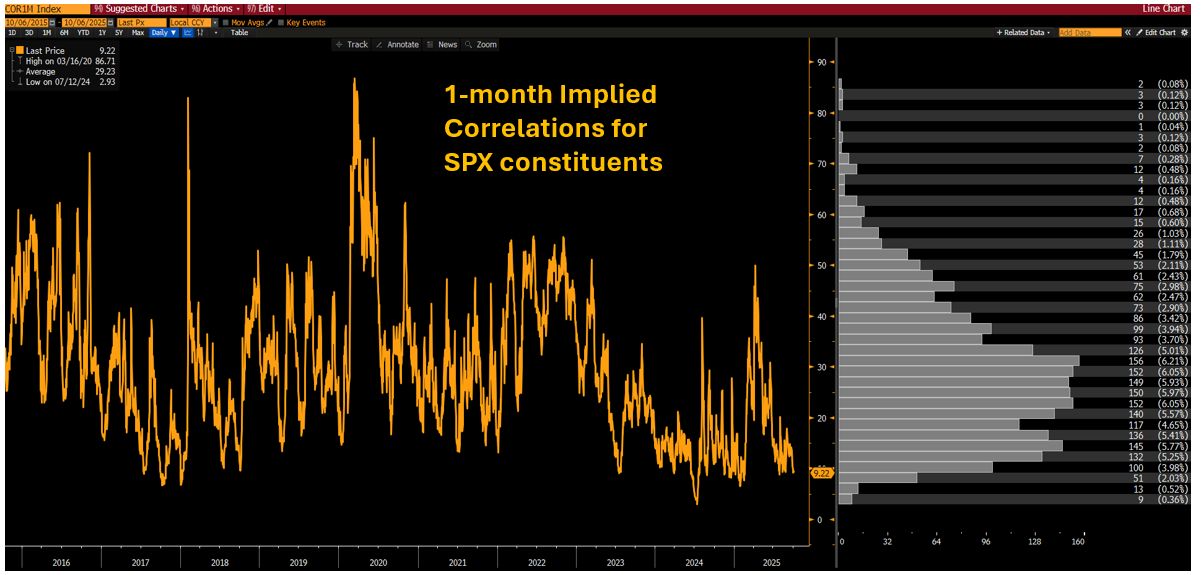Moody’s downgrades Senegal to Caa1 amid rising debt concerns
One of the biggest risk in markets lies in the Dispersion Trade.
The Dispersion Trade involves buying volatility on single stocks constituting the index and selling index volatility against it.
The idea is to monetize diversification and low correlations.
As long as single stocks become more and more uncorrelated, their individual volatility might remain high (you buy that) but the index volatility will keep coming down (you sell that) as low correlation amongst single stocks means less volatility at an index level.
The amount of money chasing and monetizing the Dispersion Trade is very large.
Large hedge funds often have multiple pods embarked in some version of this strategy, and they have been consistently making money for over a year now.
Today, the cost to enter a Dispersion Trade is quite elevated.
Investors are happy to pay a high price to enter this trade, effectively assuming that single stock correlation will stay low (e.g. we won’t see a rapid deleveraging event).
The chart below shows how the 1-month implied correlation for SPX constituents is priced to be extremely low.
Yet the Dispersion Trade keeps making money and keeps getting bigger.
This is because, despite paying a higher and higher price to enter the trade, realized correlations amongst SPX constituents have been virtually zero.
But what happens if you have a deleveraging event / sharp sell-off?
Single stocks’ correlations converge to 1 (e.g., they all sell off together), and chaos ensues.
Do you think the Dispersion Trade is a big risk for markets?
***
This article was originally published on The Macro Compass. Come join this vibrant community of macro investors, asset allocators and hedge funds - check out which subscription tier suits you the most using this link.
